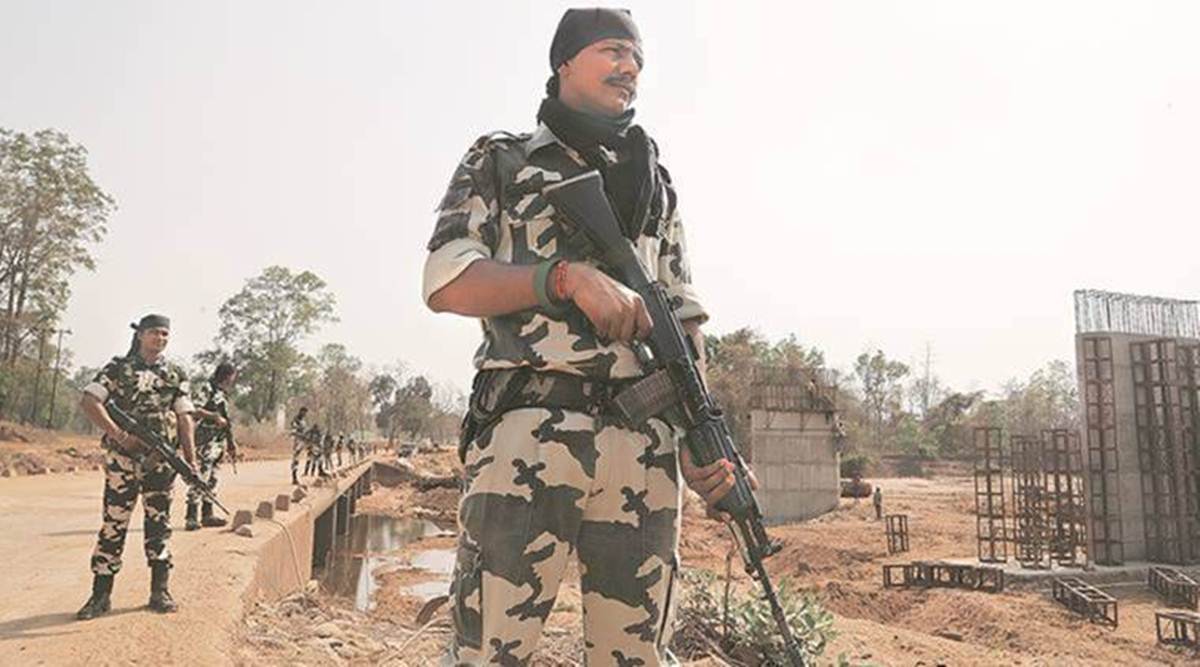 This tragic incident is a major and embarrassing setback to the IS (internal security) capability of India at many levels and highlights the challenge that LWE (left-wing extremism) continues to pose.
This tragic incident is a major and embarrassing setback to the IS (internal security) capability of India at many levels and highlights the challenge that LWE (left-wing extremism) continues to pose. The COMBING OPERATION by local and central police forces in the Tekulguda region of Bastar, Chhattisgarh, over the Easter weekend that was mounted to apprehend a Maoist leader went terribly wrong and resulted in the death of 22 security personnel and many more wounded. This tragic incident is a major and embarrassing setback to the IS (internal security) capability of India at many levels and highlights the challenge that LWE (left-wing extremism) continues to pose.
The tactical/operational strand first. Preliminary reports suggest that as many as 2,000 security personnel drawn from different organisations (CRPF, Cobra commandos, local police, et al) had been assembled to find a local Maoist rebel leader — Madvi Hidma — and that this large force was lured into a trap and then attacked.
Media reports indicate that this force of police and para-military personnel panicked and fled – leaving their dead and wounded behind. This is a very poor reflection of the leadership that was entrusted with this operation and what is even more distressing is that at the time of writing this comment, one commando is allegedly being held captive by the Maoists.
Many troubling questions arise. Why was such a large and diverse force assembled when this would have been detected by the adversary? Was the operation properly planned and led by senior officers of the respective forces? Did local intelligence anticipate such an exigency by way of the fire-power deployed by the Maoist cadres? When the attack began, why was there no attempt to regroup and punish the Maoists? Why were the dead and wounded abandoned by their comrades?
A detailed investigation will no doubt shed more light on the reasons behind this debacle and both the Chhattisgarh government and the Home Ministry in Delhi will have to go back to the drawing board to objectively take stock of Tekulguda – and the many other LWE setbacks that have led to as many as 15,000 lives being lost due to Maoist/Naxal violence over the last three decades.
Now for the strategic inadequacies that bedevil India and its management of the IS challenge. India has been dealing with three variants of the IS challenge for decades and each has its own complexities — a proxy war and terrorism in Kashmir, sub-national separatist movements in the Northeast and the Naxal-Maoist insurgency (aka LWE) in the Red Corridor — and have warranted different responses. The first two strands have been reasonably contained.
LWE and the current Maoist movement has its genesis in poor governance, lack of development in the tribal belt and an oppressive/exploitative hierarchy of the state and society that has pushed the tribal population, the landless and the socio-economically backward sections to the margins of survival.
In November 2005, then PM Manmohan Singh described the LWE challenge as the most serious security threat to India and exhorted the professionals to evolve appropriate responses. In the interim, India has had the benefit of two NSAs at the security apex who are acknowledged as high-octane intelligence specialists (M K Narayanan and A K Doval) and yet there has been no meaningful policy review of the IS challenge.
What compounds the higher IS management deficiency is that as far back as December 1999 — when the Kargil Review Committee (KRC) report was tabled in parliament — one of the recommendations noted: “There is general agreement that in the light of the new situation of proxy war and large scale terrorism that the country faces, the role and the tasks of the para-military forces have to be restructured particularly with reference to command and control and leadership functions.”
Regrettably, this critical component of restructuring the leadership of the central police forces (in this case the CRPF and BSF) has not been addressed, much less redressed. By training, the police officer is expected to be a competent Superintendent and to maintain law and order. This is not the skill-set that is relevant when an officer has to “command” and lead his men into insurgency operations.
In the current scenario, barring a few exceptions, many of the senior police officers (IPS cadre) who are parachuted into the central police forces at senior ranks have little or no platoon/battalion experience. This results in the Tekulguda kind of tragedy, where absent effective leadership, when the bullets fly, the security forces panicked and abandoned both their dead and their weapons. This is sacrilegious for a fighting force.
The onus for this sorry state of affairs apropos capacity building to address India’s complex internal security challenge lies with the political leadership of the country, which has abdicated and allowed this kind of stasis to fester – one where the loss of precious lives could have been avoided. In all likelihood, Tekulguda will soon recede from the collective radar, as have many other similar setbacks.
The writer is director, Society for Policy Studies, New Delhi
- The Indian Express website has been rated GREEN for its credibility and trustworthiness by Newsguard, a global service that rates news sources for their journalistic standards.

